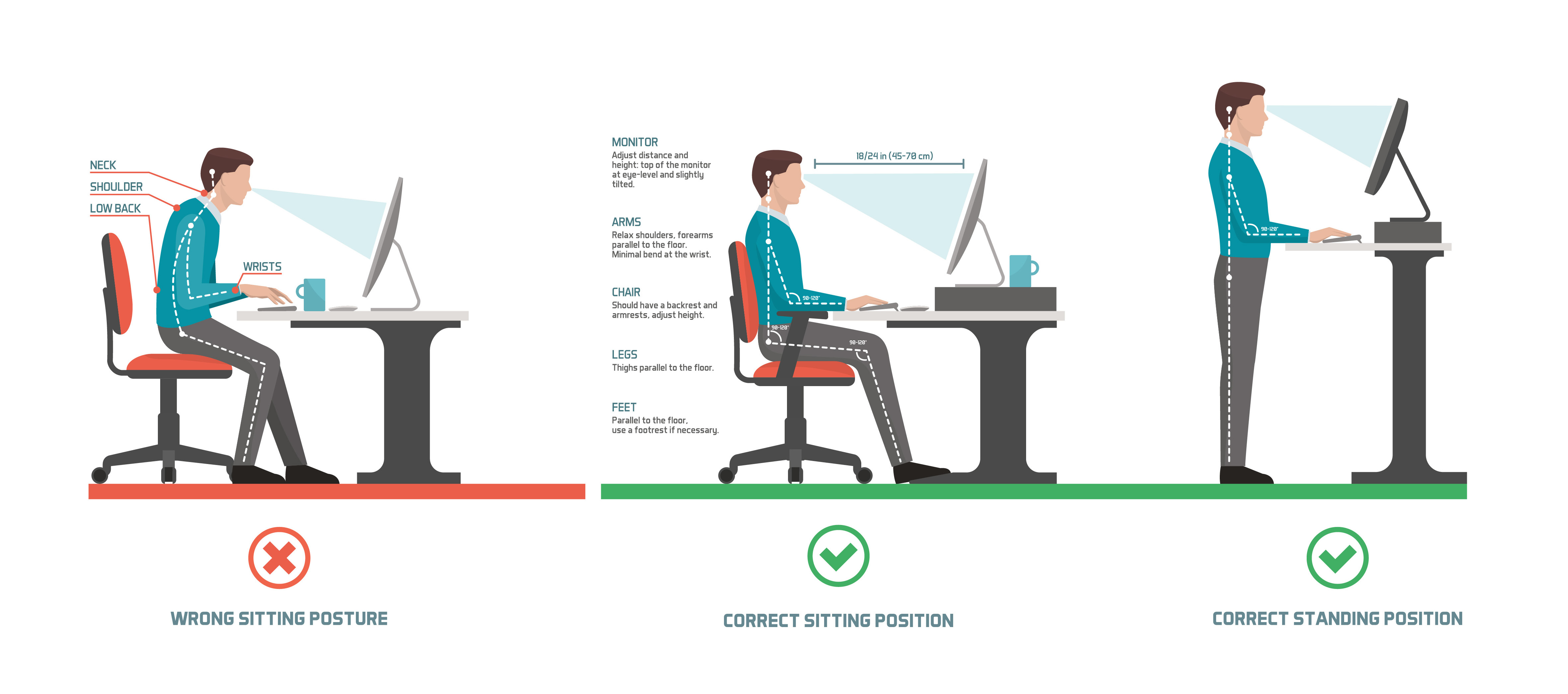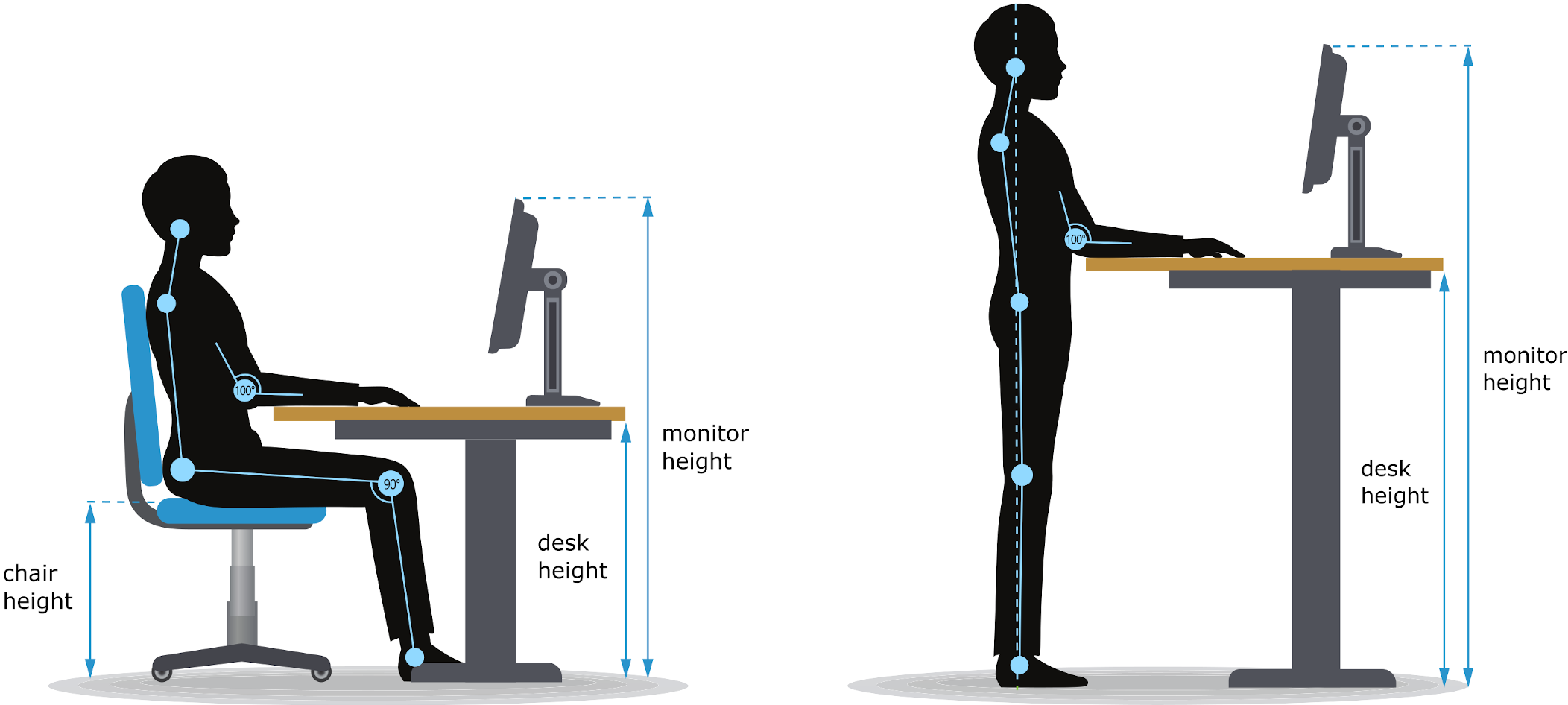Adjusting Desk Chair Height for Optimal Ergonomics: Desk Chair Height Recommendations

My dear friends, the foundation of a productive and pain-free workday rests upon the seemingly simple act of adjusting your desk chair. A chair improperly adjusted can lead to a cascade of discomfort, from nagging backaches to debilitating wrist pain. Let us, together, embark on a journey towards ergonomic enlightenment, ensuring your comfort and well-being throughout your workday.
Desk Chair Adjustment Mechanisms
Several ingenious mechanisms exist to customize your chair to your unique physique. Understanding these mechanisms is paramount to achieving the perfect ergonomic fit. The wrong adjustment can negate all the benefits of an ergonomic chair. Consider these crucial elements:
| Mechanism | Description | Advantages | Disadvantages |
|---|---|---|---|
| Pneumatic Lift | A gas cylinder that allows for quick and easy height adjustment. | Simple, fast adjustment; smooth operation. | Can be prone to leaks over time; requires careful handling to avoid sudden drops. |
| Height Adjustment Lever | A lever that manually adjusts the chair’s height. | Generally durable and reliable; often found in less expensive chairs. | Can require more effort to adjust; may not offer the same level of precision as a pneumatic lift. |
| Ratchet Mechanism | A mechanism that allows for precise height adjustment in incremental steps. | Offers precise control over height; typically very durable. | Can be slower to adjust than a pneumatic lift. |
| Screw Mechanism | A screw-based system for adjusting the chair’s height. | Very durable and reliable; often found in heavy-duty chairs. | Requires more effort to adjust; adjustment is relatively slow. |
Proper Chair Height Adjustment
Achieving the ideal chair height is crucial. This involves a harmonious balance between your knees, hips, and feet, all working in perfect synchronicity. Imagine it as a well-orchestrated symphony of posture.
Desk chair height recommendations – Follow these steps to achieve this perfect posture:
- Sit upright: Begin by sitting in your chair with your feet flat on the floor.
- Adjust the height: Use the chair’s adjustment mechanism to raise or lower the seat until your thighs are parallel to the floor, forming a 90-degree angle at your hips and knees.
- Check your foot placement: Ensure your feet are flat on the floor and comfortably positioned beneath your knees. If your feet don’t reach the floor, use a footrest to support them.
- Fine-tune: Make small adjustments as needed to achieve optimal comfort and support.
Ergonomic Benefits of Different Seating Positions
The human body, in its infinite wisdom, thrives on variety. While the 90-degree angle is ideal as a baseline, slight variations can provide additional benefits.
Let us examine the subtle nuances of different seating positions:
- Upright Posture:
- Advantages: Promotes alertness, improves breathing, and reduces strain on the back.
- Disadvantages: Can become uncomfortable over extended periods; may not provide sufficient lumbar support.
- Slightly Reclined Posture:
- Advantages: Reduces pressure on the spine, can improve circulation, and allows for short periods of relaxation.
- Disadvantages: Can lead to slouching if not supported properly; may reduce alertness and productivity.
Adjusting Chair Height for Different Desk Heights, Desk chair height recommendations
Adapting your chair to various desk heights is a dance of adjustments. Each step is a careful consideration, ensuring your comfort remains paramount.
- Assess Desk Height: Measure the height of your desk surface.
- Initial Chair Adjustment: Adjust your chair height so that your elbows are at a 90-degree angle when your forearms are resting on the desk.
- Fine-tune for Leg Comfort: Ensure your feet are flat on the floor. If not, use a footrest. Adjust the chair height again if necessary.
- Monitor and Readjust: Throughout the day, pay attention to your posture and make minor adjustments as needed to maintain comfort and prevent strain.
Desk Chair Height and Desk Setup Considerations

My dear friends, let’s delve into the harmonious dance between your chair and your desk, a relationship as crucial to your well-being as the rhythm of a sitar in a raga. The right setup isn’t just about comfort; it’s about preventing the insidious creep of aches and pains that can steal the joy from your work. A perfectly adjusted chair, in perfect harmony with your desk, is the foundation of a productive and healthy workday.
The height of your desk chair is intrinsically linked to the height of your desk. Imagine this: your forearms rest comfortably on your desk, elbows bent at a 90-degree angle. This is the sweet spot, the posture of a contented yogi. If your chair is too low, you’ll hunch over, straining your neck and back. Too high, and you’ll reach, creating tension in your shoulders and arms. This ideal positioning of your elbows and wrists is paramount when typing, preventing repetitive strain injuries and the onset of carpal tunnel syndrome. Remember, my friends, your body is a precious instrument; treat it with the respect it deserves.
Elbow and Wrist Positioning During Typing
Maintaining a 90-degree angle at your elbows and wrists while typing is crucial for preventing strain and discomfort. This position allows your muscles and tendons to function optimally without excessive stretching or compression. Think of it like tuning a violin – every slight adjustment affects the final sound. Similarly, every minor adjustment to your posture impacts your long-term health. The proper alignment of your wrists and forearms reduces pressure points and minimizes the risk of developing musculoskeletal disorders. This seemingly small detail can make a world of difference in your overall well-being.
Factors Beyond Chair Height Affecting Ergonomic Desk Setup
Now, my friends, let us explore the wider landscape of ergonomic desk setup. Chair height is but one piece of the puzzle. A holistic approach is needed, encompassing every aspect of your workspace. Consider these elements, as crucial as the notes in a captivating melody:
- Monitor Placement: The top of your monitor should be at or slightly below eye level. Imagine the screen as a gentle friend, not a towering overlord. This prevents neck strain and promotes a natural head position.
- Keyboard Position: Your keyboard should be directly in front of you, allowing your wrists to rest comfortably without bending or twisting. Think of it as a welcoming embrace, not a restrictive cage.
- Mouse Placement: Keep your mouse close to your keyboard to minimize arm reaching and strain. Let your hand glide effortlessly, like a dancer across a stage.
- Footrest: If your feet don’t comfortably reach the floor, a footrest can help maintain proper posture and circulation. Think of it as providing a stable base for your entire structure.
- Lighting: Adequate lighting prevents eye strain and promotes a comfortable working environment. Just as a painter needs proper light to create, so too do you need to see your work clearly.
Tips for Choosing an Ergonomically Sound Desk Chair
Selecting the right chair is an art, my friends, requiring careful consideration. Here are some guiding principles to help you find your perfect companion:
- Height Adjustability: Look for a chair with a wide range of height adjustment, ensuring you can easily find the perfect position. This is the cornerstone of your ergonomic foundation.
- Lumbar Support: A chair with adjustable lumbar support will cradle your lower back, providing crucial support and preventing slouching. This is the embrace of comfort, preventing the insidious creep of back pain.
- Armrests: Consider armrests that allow your elbows to rest comfortably at a 90-degree angle. This is the harmonious balance, ensuring your arms and shoulders remain relaxed.
- Material and Breathability: Choose breathable materials like mesh or breathable fabric to prevent overheating and discomfort. Think of it as a cool breeze on a summer’s day.
- Durability and Build Quality: Invest in a chair that is well-built and durable, ensuring it will support you for years to come. This is an investment in your health and well-being.
Choosing the Right Desk Chair Height
Finding the perfect desk chair height isn’t rocket science, my friends. It’s about achieving a posture that feels natural and comfortable. Start by adjusting your chair so your feet are flat on the floor and your thighs are parallel to the ground. Your elbows should be bent at approximately 90 degrees while your forearms rest comfortably on your desk. If your desk is too high or too low, you might need to adjust your chair or desk accordingly. Remember, slight adjustments can make a world of difference. Finding the right height is about finding the sweet spot where your body feels supported and balanced, allowing you to work efficiently and comfortably throughout the day. Listen to your body; it will guide you.
